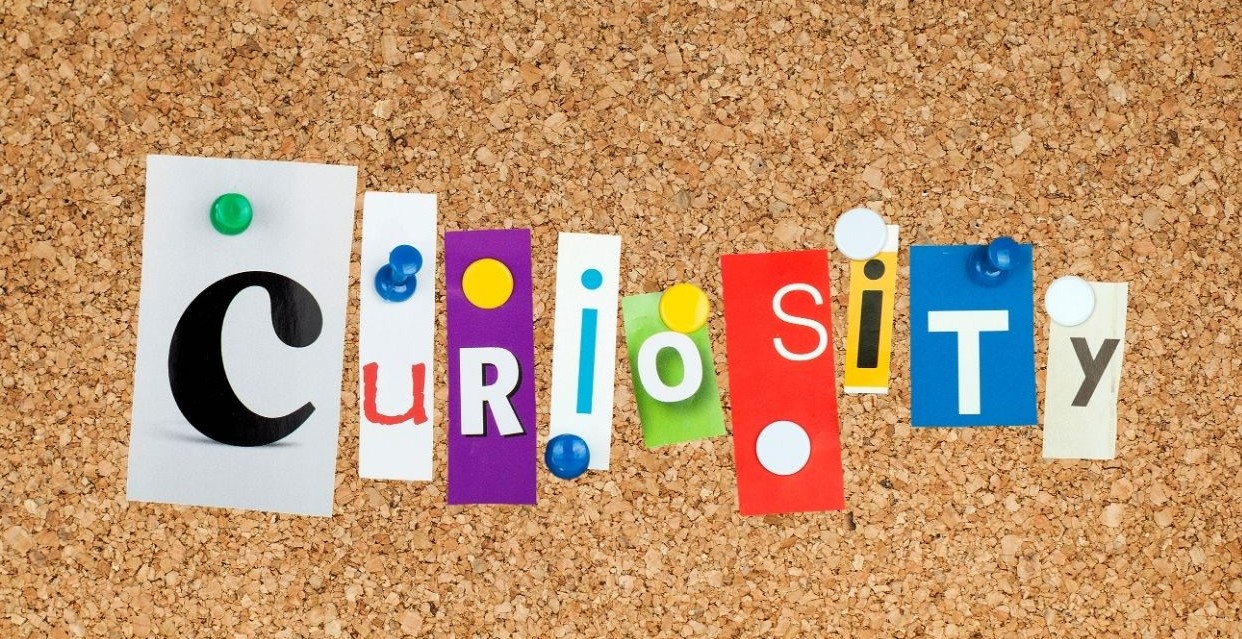0 Curiosity
- Career Planning and Development
- by Nicole Bridge
- 06-17-2025

In this month’s newsletter, we’re talking about curiosity. That word might sound like it belongs floating off on a hot air balloon in the sky instead of being shaped into an article about professional development. But the truth is: harnessing curiosity inspires a sort of thinking that has immediate practical use in your work.
Curiosity is defined as “a strong desire to know or learn something.” It’s a state of heightened interest that makes you embrace the unexpected or unusual as a means of gathering information. Curiosity makes us feel engaged with what we’re doing and leaves us open to possibility and discovery which casts a happy, exciting light on our world-- even at the office.
Be Curious to Learn Better
It’s highly worth finding opportunities to cultivate curiosity in our work because if we’re connected to what we’re doing, we’ll inevitably be more successful. When our interests are piqued, we tend to do things such as ask more questions, find additional aspects of a project to get involved in, and confidently speak up about what we know. Not only that, but studies also show people who are curious learn faster and feel calmer. Learning something new triggers the brain’s reward centers, which in turn releases dopamine. This happy hormone helps to lower anxiety and gives us a feeling of contentment.
Curiosity to Widen Perspectives
Last year Psychology Today published about the benefits of cultivating curiosity. They quoted Albert Einstein’s famous line “I have no special talents, I am only passionately curious.” The article went on to explain that being curious about other people, including their backgrounds and opinions, makes us more likely to seek their points of view and try to empathize with them. Widening your perspective, listening to others, learning more about the context of someone whose viewpoint is different than your own, might open just the space needed to develop new ideas and solutions.
Curiosity’s Biggest Hurdle
Small children are extremely curious; just think about how many questions they ask! As we grow older, that intense question-asking tends to fall off as we start to know everything. Or at least we think we do. Asking questions is an important component of curiosity, especially quality questions. TheBigThink.com explains that there are two types of questions: divergent and convergent. Divergent questions often involve wondering about the “whys” and “what ifs.” Convergent questions (who, what, where) get to the bottom of the basic story quickly. But they also lead us to firm answers and information that has already been agreed upon by the group. In this way, convergent questions tend to be curiosity killers. So, ask questions, and try starting with divergent ones first to keep the group from getting locked into just one way of thinking.
Create Opportunities to Be Curious
Think of ways to get your curiosity going as a matter of practice. You might, for example, change one of your regular habits, such as where you park at the office or the route you take to the cafeteria. Or go big with a completely new hobby such as birdwatching or swimming. When we change our routine, we lean into those big questions of wondering instead of incurring exact answers.
Internal Curiosity: Daydreaming
We’ve been talking a lot about the outward-facing process of learning about the world around us, but let’s not forget about the internal ways we can open our minds. Daydreaming is one path to lowering stress (as long as you aren’t doing it at time when you shouldn’t be!). Try to let daydreaming happen organically when you’re wandering the grocery store or listening to your favorite music on a walk. Even if your daydreams seem unrelated to current life, a vision of pulling a sword out a stone to save a kingdom or imagining how you’d redecorate your house if you won the lottery, your mind’s wanderings often include a clue about what you really want and the narrative you’re building.


